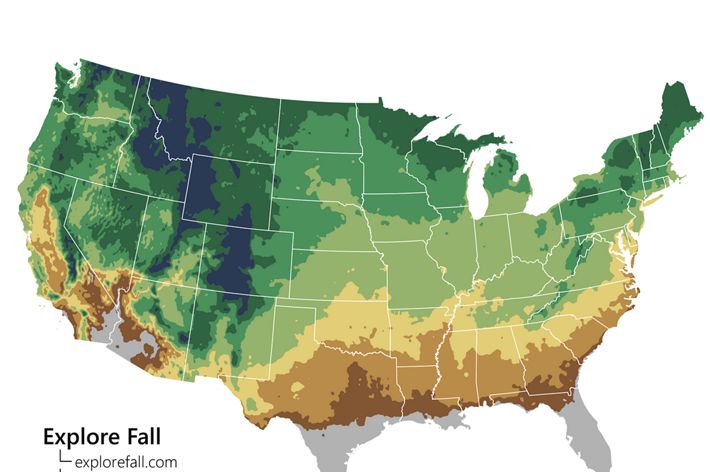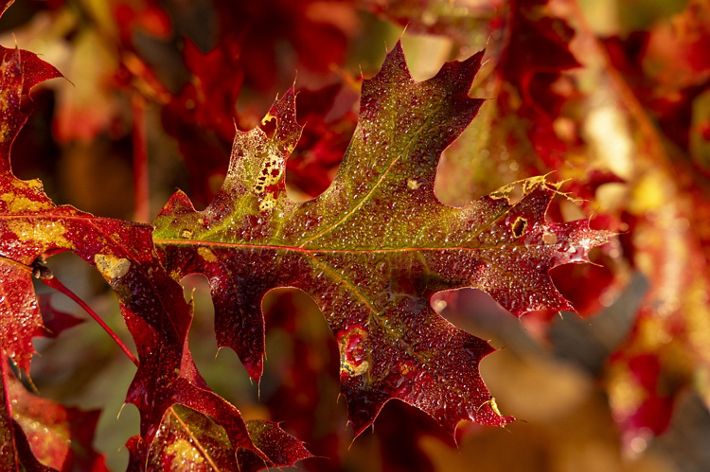Find Your Connection in Nature Stories
Fall For Nature
Plan your leaf peeping adventure at TNC preserves across North America.
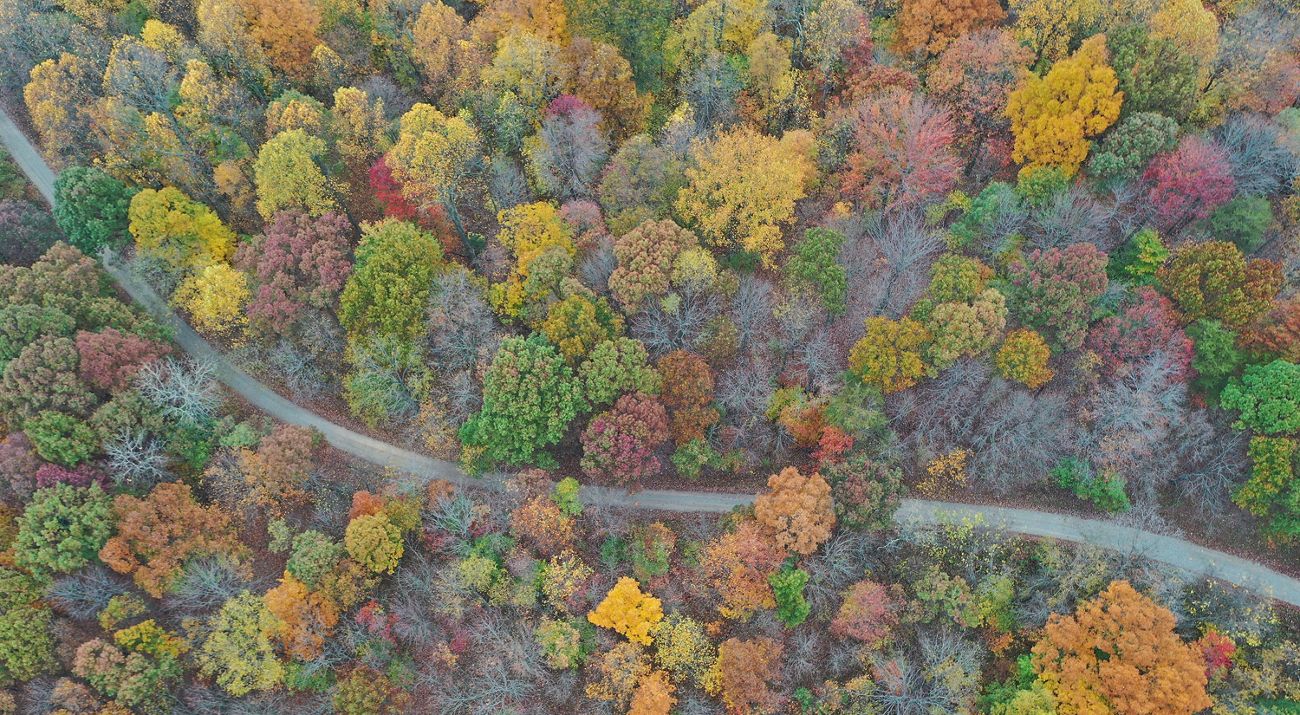
The days are becoming shorter and some parts of the country are feeling a chill in the air. Both are cues that unleash a spectacular event in nature, when leaves on deciduous trees like oaks, maples, birches, elms and aspens put on a vibrant display of color that transforms landscapes across North America.
Whether you're chasing peak foliage or seeking weekend wanderings into crisp air and golden light for hiking, photography or peaceful reflection, there are many Nature Conservancy preserves that offer breathtaking opportunities to make the most of this season.
In this guide, we’ll take you to top destinations for leaf peeping, share tips for planning your adventure and highlight how your outdoor experiences can benefit nature. It’s time for some autumn adventures!
Why do leaves change?
Did you ever wonder about the science behind changing leaves? We have chlorophyll to thank for the primary color that we associate with trees: green. This dominant pigment results from the process of photosynthesis, where trees convert sunlight into sugar for energy. The diminishing sunlight that comes with shorter days as summer transitions into fall slows down that process. The green chlorophyll begins to break down, leaving room for less dominant pigments to emerge – reds, golds, oranges, purples – while trees conserve and consolidate energy in preparation for winter. Eventually the trees release their leaves and enter dormancy until more light returns in spring.
Permission to Leave the Leaves
When was the last time you were a little rebellious? Autumn might just be the time to ignore nosy neighbors and societal constructs and leave those leaves on the ground rather than at the curb. No one will miss the sound of the leaf blower, we promise. And now you’ll have more time for pumpkin patches and corn mazes!
Leaves are NOT litter. In fact, they are beneficial in so many ways. Leaf debris, better known as nature’s mulch or nature’s fertilizer, breaks down to add nutrients that enrich healthier, more productive soils capable of holding more moisture and supporting diverse wildlife. Leaving a light layer of leaves on your lawn and raking them into beds also provides key habitat for birds and bugs that serve as important pollinators.
Want to take it a step further? Consider transitioning a traditional lawn into a more dynamic and diverse (and easier to care for) garden of native perennials, wildflowers and pollinator plants.
Top TNC Preserves for Leaf Peeping
Learn about TNC preserves where autumn leaves put on an especially spectacular show this time of year.
Best Preserves for Leaf Peeping
- Baxter's Hollow Preserve: Wisconsin
- Bluff Mountain Preserve: North Carolina
- Burnham Brook Preserve: Connecticut
- Dick and Nancy Eales Preserve at Moosic Mountain: Pennsylvania
- Edge of Appalachia Preserve System Ohio
- Green Hills Preserve: New Hampshire
- Lennox Woods Preserve: Texas
- Nan Weston Preserve at Sharon Hollow: Michigan
- Nine Times Preserve: South Carolina
- Shady Valley Preserves: Tennessee
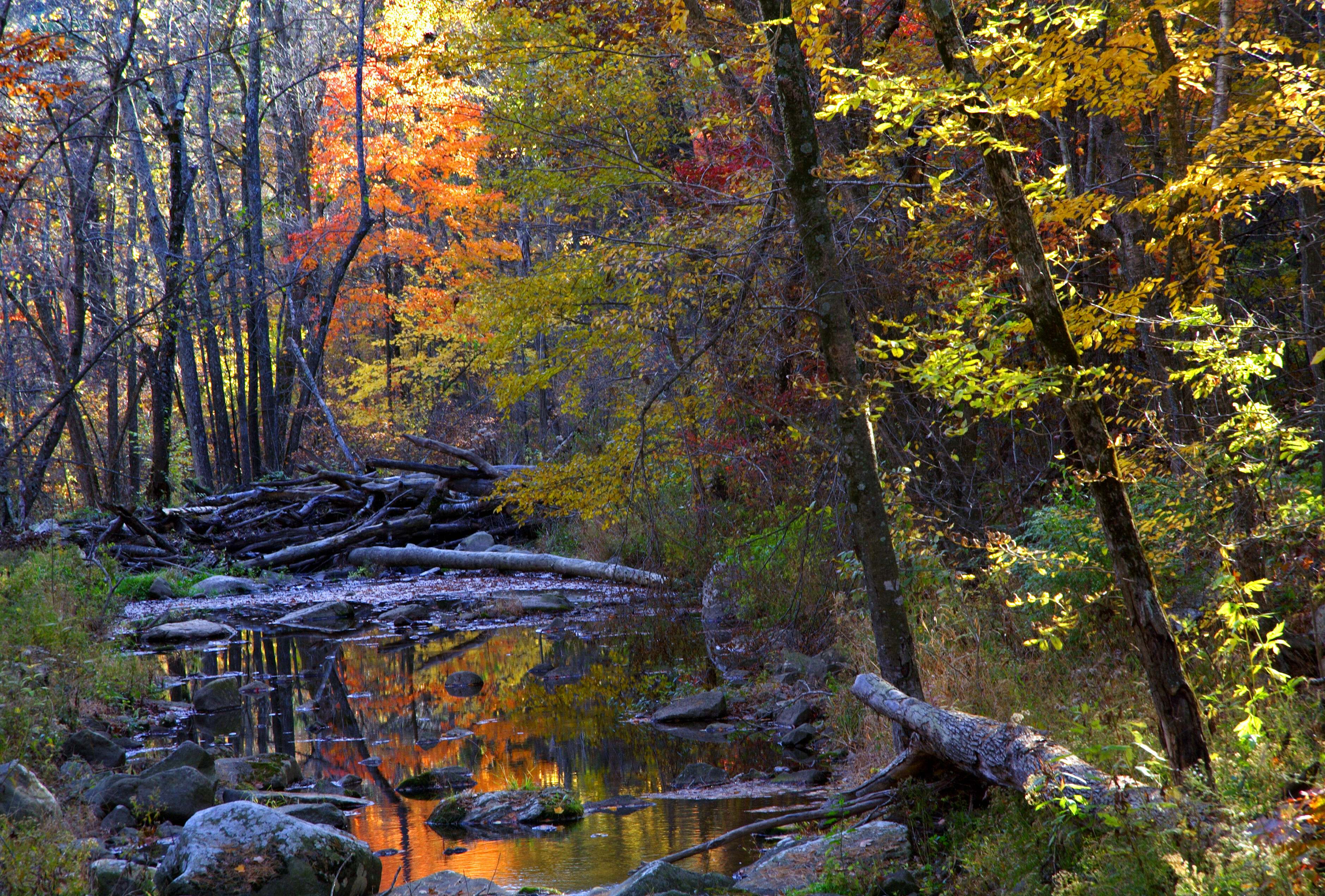
Baxter's Hollow, Wisconsin
This time of year is a great time find your fall groove at a forest sanctuary located in the heart of one of the most ancient rock outcrops in North America. The forest located at TNC’s approximately 6,000-acre Baxter's Hollow Preserve is part of the state’s largest intact southern deciduous forest, a mosaic of oak, hickory, maple, basswood, yellow birch and ash that grows on Baraboo quartzite bluffs dominating this landscape and unique to the Midwest. For leaf peepers, this area's combination of high elevations, deep valleys and open woods creates a formula for fiery reds, oranges and yellows characterizing fall in Wisconsin. Even better, this part of the state also lends itself to scenic drives, apple picking, pumpkin patches and other seasonal activities. Stay up to date on fall color at Travel Wisconsin’s Fall Color Report.
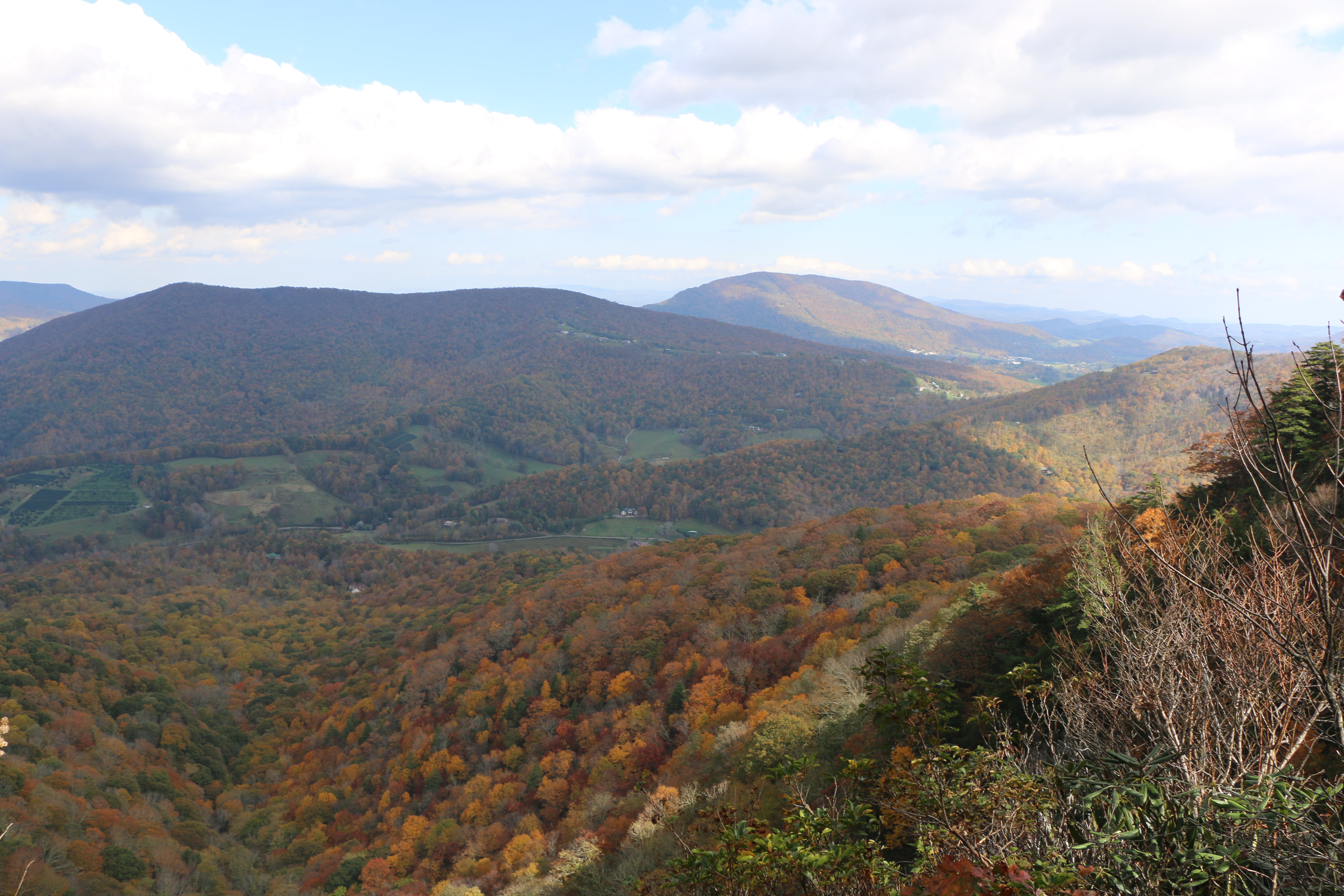
Bluff Mountain, North Carolina
If taking a road trip along the Blue Ridge Parkway during fall isn’t on your bucket list, it should be. For 460 miles, this national road connects Shenandoah National Park to the Great Smoky Mountains National Park and in October shows off vibrant autumn hues as it winds through Virginia’s and North Carolina’s portion of the Appalachian Mountains. Along the way, visitors can find countless overlooks, hiking trails and picnic spots. One option includes TNC’s Bluff Mountain Preserve, which boasts high elevation Carolina hemlock and dwarf red-oak-white-oak forests and hundreds of unique plants including 25 endangered, rare or threatened flowering species. While the preserve offers limited access, TNC conducts monthly guided hikes that are worth the visit and especially during fall.

Burnham Brook Preserve, Connecticut
TNC’s 1,122-acre Burnham Brook Preserve is home to a large, intact forest of oak, hickory, beech, birch, maple and conifers which, together, play a key role in protecting the Eightmile River watershed and supporting abundant wildlife. This healthy and diverse forest also shows off impressive foliage each year when fall rolls around. Visitors can access a good portion of the preserve, including a stunning overlook, via a system of trails that meet a variety of skill and experience levels. In Spring 2025, TNC announced a way that even more nature lovers can visit Burnham Brook with the addition of a new, all-terrain wheelchair, or “track chair.” It’s an exciting development that promises even more opportunities to enjoy fall colors, and all of the seasons, in Connecticut. The preserve also hosts the home (and now preserve office) of Dr. Richard Goodwin, one of TNC’s original founders in 1951.

Dick and Nancy Eales Preserve at Moosic Mountain, Pennsylvania
TNC’s Dick & Nancy Eales Preserve at Moosic Mountain is so popular during the fall, that it has become a destination for engagement shoots, family portraits and local media influencers. Don’t let that deter you. People are discovering the Eales Preserve because it is unique. Easily accessible from nearby population hubs such as Philadelphia, the state capital of Harrisburg and (for lovers of The Office) Scranton, Pennsylvania, this preserve features a broad ridgetop of bedrock slabs and boulders interspersed with vast meadows and unique, fire-dependent heath barrens of stunted pine and oak forest dominated by huckleberry, blueberry, rhodora and other low-lying shrubs. While there are 2,250 acres to explore, hiking the Blueberry Trail, preferably at sunset, is recommended for enjoying non-stop views and fall colors of the surrounding valley in all directions.
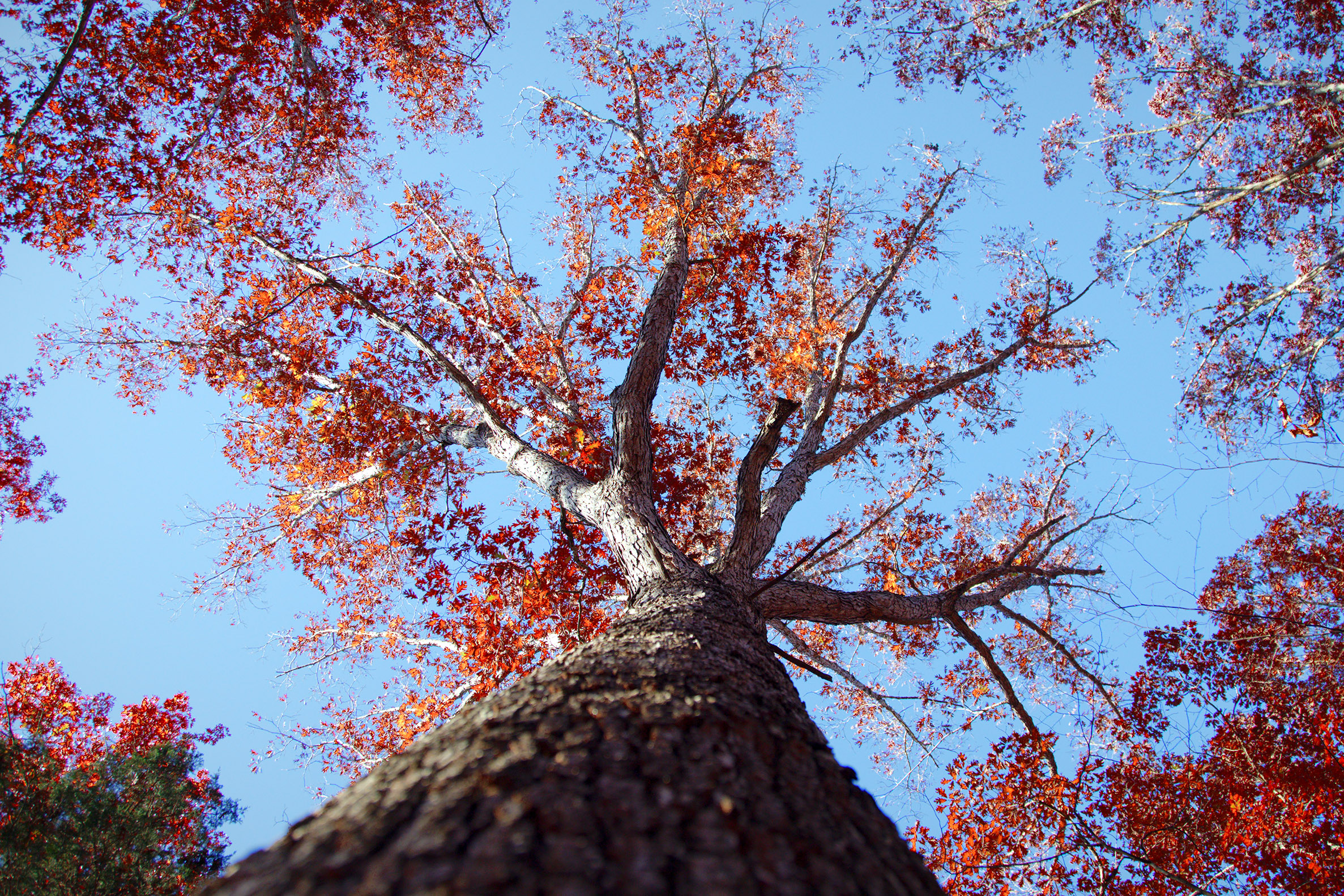
Edge of Appalachia Preserve System, Ohio
TNC’s Richard and Lucile Durrell Edge of Appalachia Preserve System, better known by Ohioans as “The Edge,” encompasses over 21,000 acres in the foothills of the Appalachian Mountains. During the fall season in Ohio, this collection of nature preserves shows off spectacular colors as forests become ablaze with hues of deep russet, burgundy and amber while goldenrod, ironweed, field thistle and aster cover the prairies. The best place to take in the full palette is atop the Buzzardroost Rock, considered by many the most amazing view in the state. Another option for great leaf peeping is the Charles A. Eulett Wilderness Preserve, which offers a 2.4-mile loop trail that leads deep into the woods as green leaves transform into bright autumnal colors.
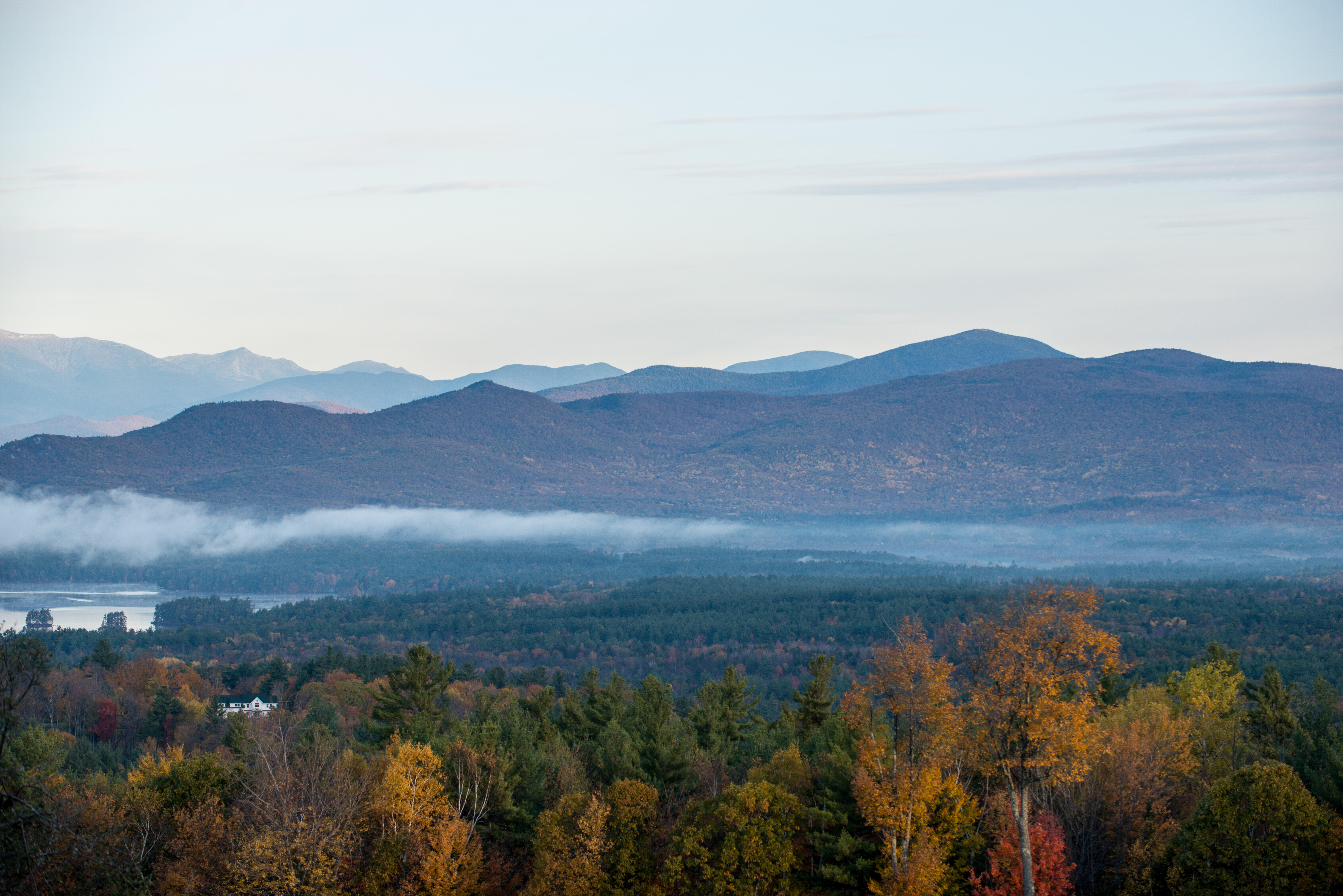
Green Hills Preserve, New Hampshire
Visitors looking for fall foliage will not be disappointed upon visiting TNC’s Green Hills Preserve. The preserve protects more than 5,500 acres of forested ridgeline featuring a string of summits and outstanding views of the Presidential Range and Mount Washington, the highest peak in the northeast. TNC, the Town of Conway and the State of New Hampshire have partnered to protect much of this land (combined, nearly 9,000 acres) for public benefit. But that’s not all. The Green Hills are part of an even more ambitious initiative to conserve and connect the 80-million-acre Northern Appalachians region, which represents the largest intact example of temperate forest in the Western Hemisphere. Check out the preserve’s trail map and pick your autumn adventure.
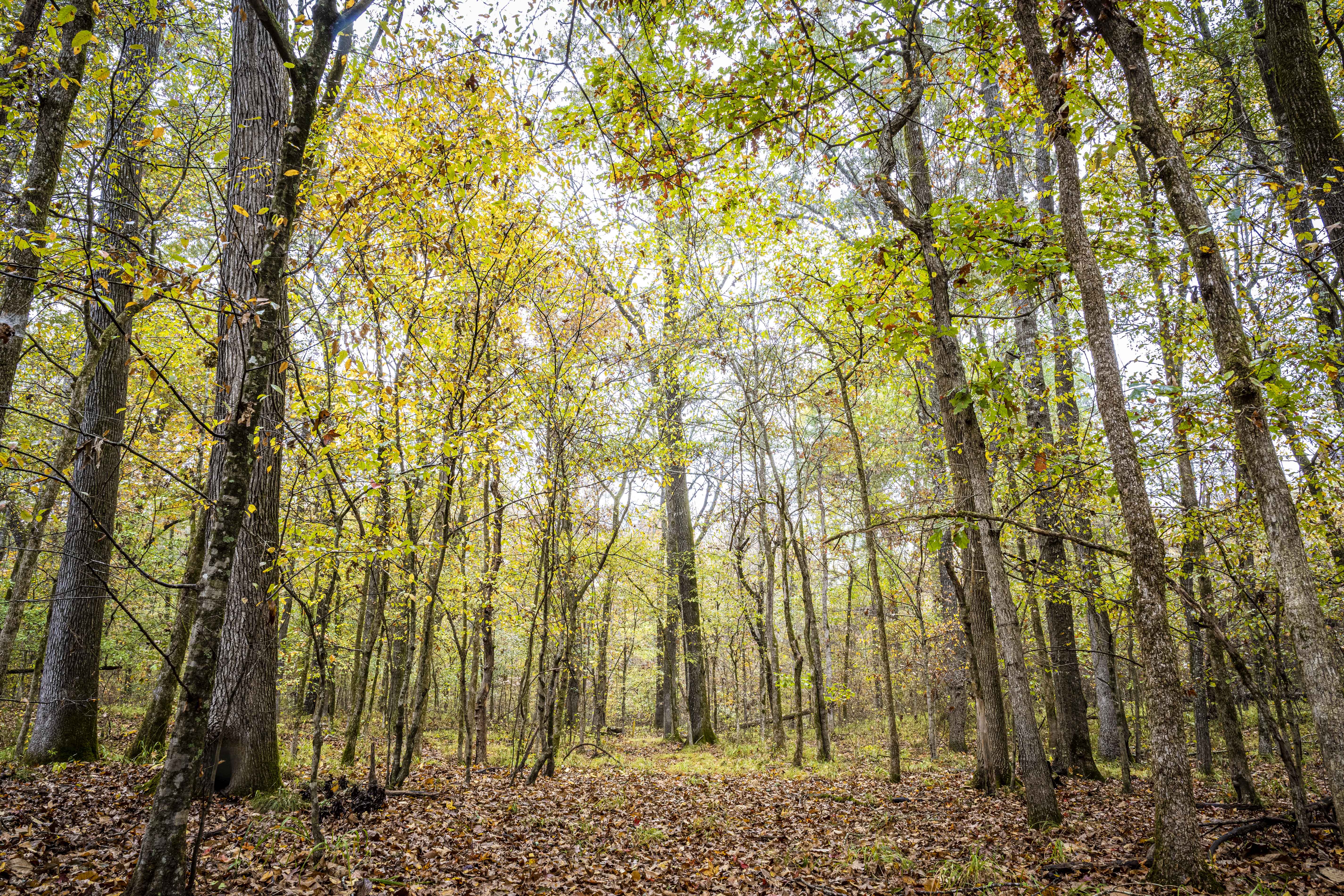
Lennox Woods Preserve, Texas
You don’t need to travel far from Texas’ second largest city to find fall foliage. Just a few hours northeast of Dallas, TNC’s Lennox Woods Preserve boasts one of the state’s few remaining examples of pristine, old-growth forests spared from logging unlike most of the surrounding landscape. Owned and maintained by the Lennox Family for four generations since 1863, this 1,335-acre TNC property supports towering mature oaks, maples, sweetgum and hickories that make it a perfect destination for leaf peepers when autumn rolls around. And lucky for them, the preserve is open to the public and includes the 1.5-mile Martha Lennox Memorial Nature Trail, which loops through the forest to provide visitors with spectacular views of vibrant fall colors.
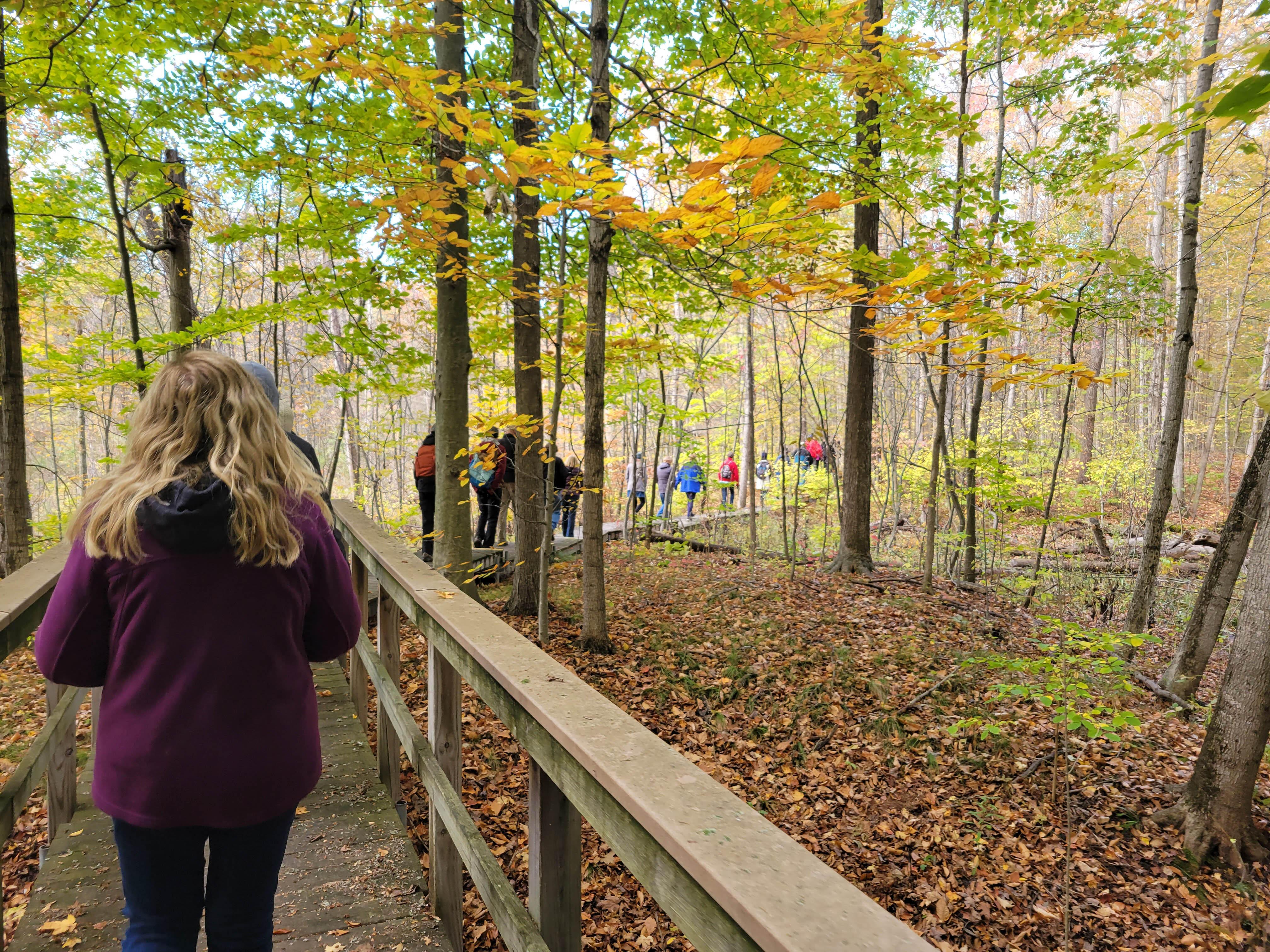
Nan Weston Preserve at Sharon Hollow, Michigan
If your favorite fall color is gold, then you are in for a treat when you visit TNC’s Nan Weston Preserve at Sharon Hollow. This time of year, the property’s abundant population of American beech trees and surrounding forest floor fill up with brilliant yellow leaves. This spectacular scenery is accessible from multiple trails that weave visitors through a native oak and hickory forest and lead to views of the river. The Nan Weston Preserve is also worth a visit during spring, when wildflower enthusiasts seek out more than 260 species of wildflowers and other native plants that grow here.
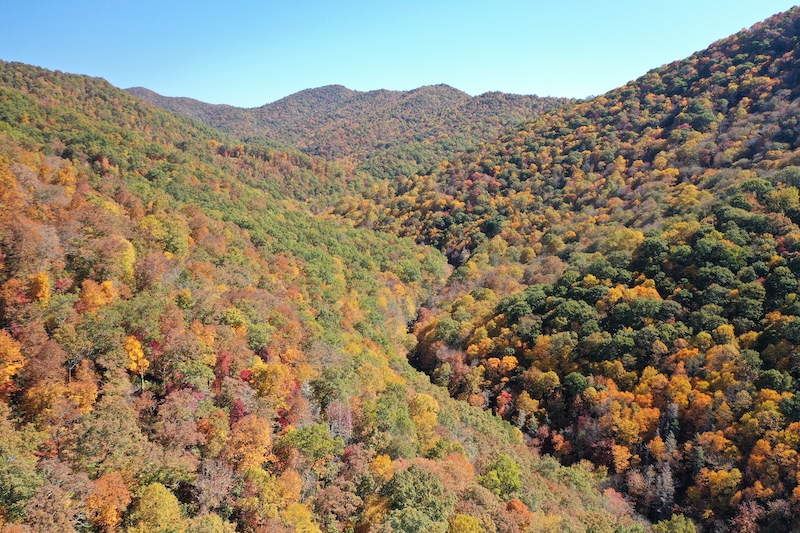
Nine Times Preserve, South Carolina
In South Carolina’s Piedmont region, at the intersection of the Blue Ridge Mountains, TNC’s Nine Times Preserve packs five mountains and seven distinct forest types into a small-but-mighty 560-acre property. Considered one of the most biologically significant conservation areas in the southeast, this landscape comes alive during fall when foliage emerges in full view of one of the preserve’s 1.7 miles of hiking trails. Local lore has it that travelers between nearby Cherokee towns had to cross a two-mile-long tributary of the Little Eastatoee River nine different times in order to stay on the path. This tributary is now known as Nine Times Creek. The preserve is also well known for its wildflowers, with 134 species documented there to date. While visitors might see a few autumn flowers, a spring visit is also highly recommended!
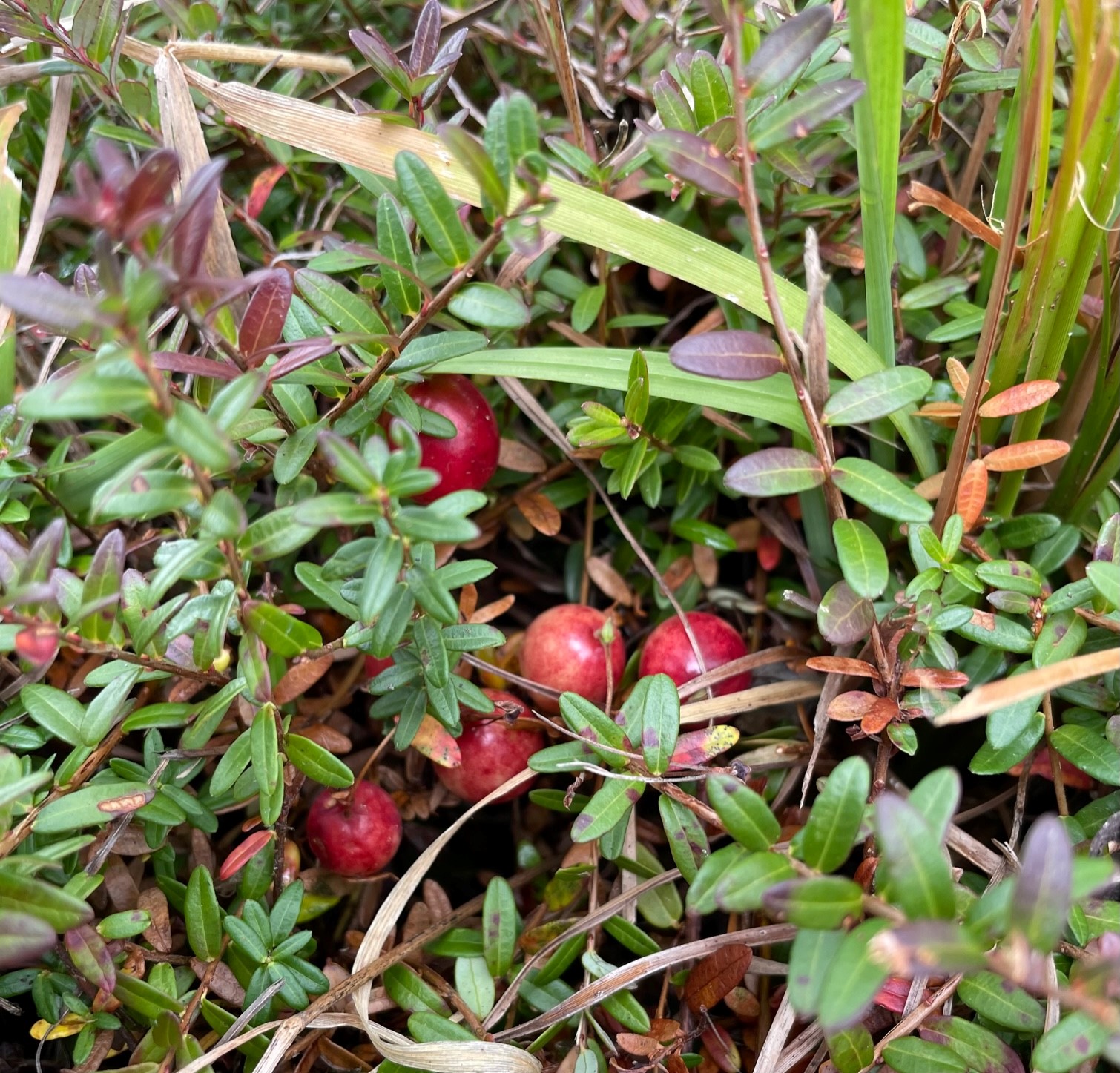
Shady Valley Preserves, Tennessee
Located in East Tennessee near the Great Smoky Mountains, renowned as one of the nation's premier destinations for fall foliage, Shady Valley evokes a New England setting, with crisp air and brilliant foliage that make it a perfect spot for a scenic autumn escape. Due to its elevation and climate, this area remains a hidden ecological treasure left behind by the last Ice Age, which has resulted in a unique mosaic of sphagnum and cranberry peat bogs interspersed with white pine and hemlock forests. The valley's wetlands represent one of only two places in Tennessee where American cranberry grows naturally. They are also home to the federally threatened southern bog turtle and a variety of other plants and animals. TNC owns four nature preserves totaling over 800 acres in Shady Valley – John R. Dickey Birch Branch Sanctuary, Schoolyard Springs, Orchard Bog and Quarry Bog. Shady Valley’s forests and bogs come alive during fall, making them a must-see destination, preferably during the annual Cranberry Festival held on the second Friday and Saturday of October. TNC gives tours of its preserves during the event, which benefits this Appalachian community.
Other TNC Preserves for Leaf Peepers
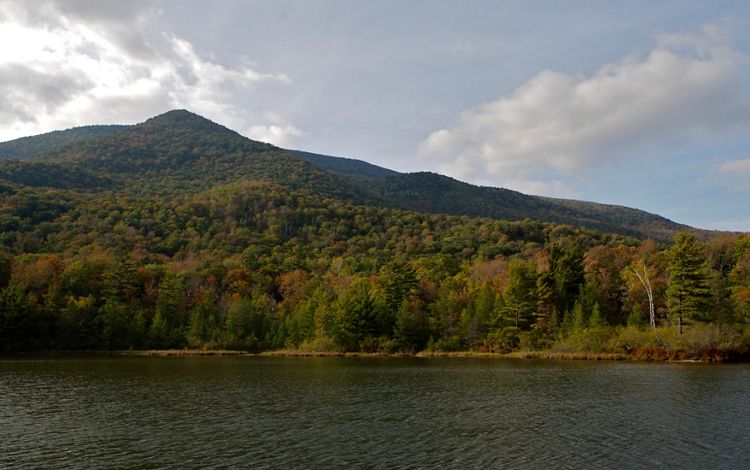
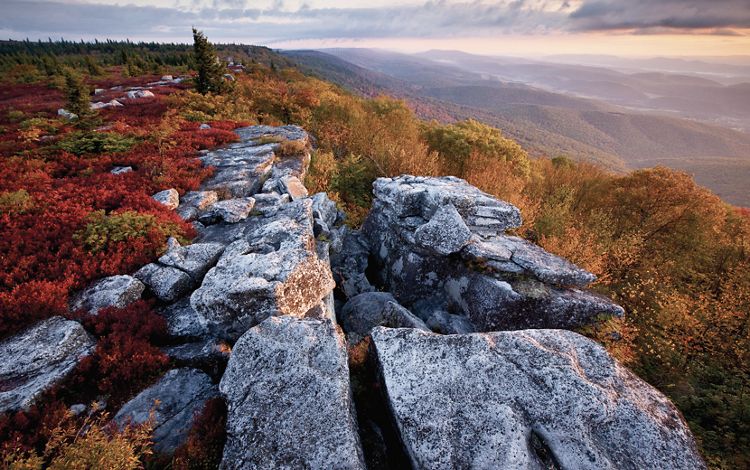
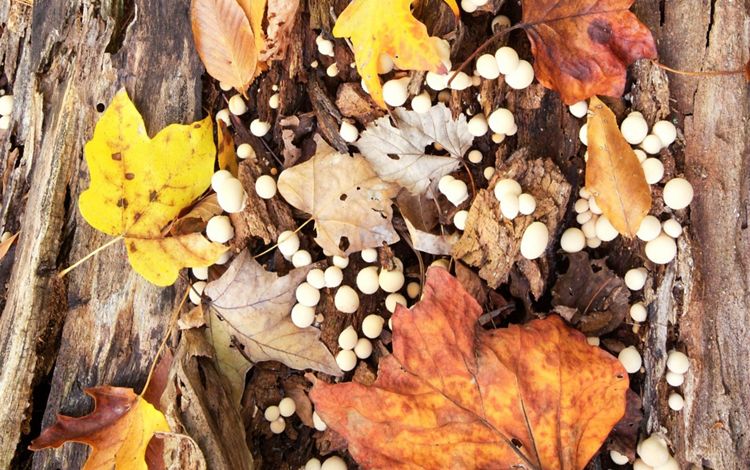
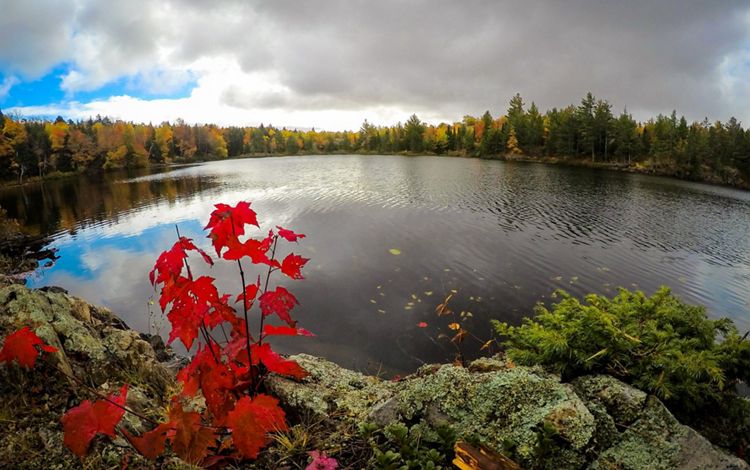
Stay in the Loop
Sign up for the Nature News email and receive conservation stories each month.
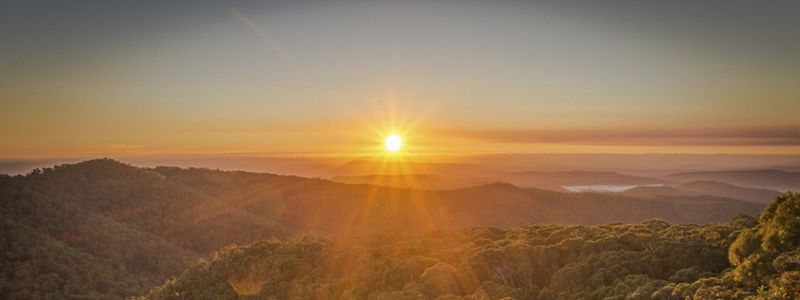
Fall Events
Check out fall events and other opportunities to get outdoors for an autumn adventure at a preserve near you!
